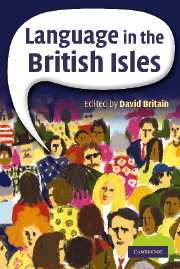Introduction
Published online by Cambridge University Press: 16 January 2010
Summary
Over twenty years have passed since Peter Trudgill's first edition of Language in the British Isles (Trudgill 1984a). A great deal has happened in those years, both to the British Isles in ways which have had fundamental linguistic consequences, and in terms of the research which has been conducted on issues concerning the way people on these islands use language. This volume attempts to provide a snapshot both of the languages and dialects spoken and signed here, and of some of the implications for education of that linguistic diversity.
At the beginning of the century, almost 60 million people lived in the UK and almost 4 million in the Irish Republic. In the UK, around 4.6 million people claimed an ethnicity other than White (and the White category included a large number of people claiming White Irish ethnicity and 1.3 million people who claimed an ‘Other-White’ ethnicity, of which only 20% were born in the UK (Gardener & Connolly 2005:7)), or roughly 7.9% of the total, representing an increase of 53% since the previous census in 1991. Since the last British census in 2001, the non-White population has continued to increase. There has been a net inflow of population of at least 100,000 per annum in every year since 1998, and in 2004 the net inflow was 223,000. The Irish Republic didn't ask questions about ethnicity in its 2002 census, but 5.8% of the population had a nationality which was not Irish. These islands are, therefore, increasingly multiethnic.
Information
- Type
- Chapter
- Information
- Language in the British Isles , pp. 1 - 6Publisher: Cambridge University PressPrint publication year: 2007
Accessibility standard: Unknown
Why this information is here
This section outlines the accessibility features of this content - including support for screen readers, full keyboard navigation and high-contrast display options. This may not be relevant for you.Accessibility Information
- 4
- Cited by
